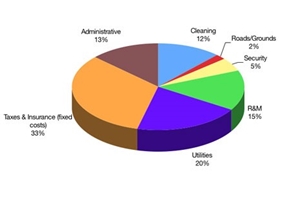Approximately 70% of the energy used in the US is used by buildings. They have a significant impact on GHG emissions. Here are seven ways to reduce your carbon footprint and GHG emissions from building HVAC systems.
- High Efficiency Equipment – High efficiency fans, motors, boilers, and roof top units reduce energy use, save you money, and reduce GHG emissions.
- Better Controls – Better control of HVAC systems ensures the systems operate at peak efficiency at all operating conditions. Good controls can modulate the equipment to operate efficiently at partial load conditions.
- Use Economizers – Use the economizer cycle to cool the building instead of the chillers and air-conditioners. The economizer brings in cool outside air when the conditions are right to cool the building and provide good ventilation, thereby reducing the need for the air conditioning system to run; saving you energy and money.
- Recover and Reuse Heat – Many buildings require heating and cooling at the same time. We’ve all experienced buildings where some areas are too hot, while others feel too cold. Moving heat from the hot areas to the cooler areas instead of generating heat with gas-fired heaters or boilers reduces a building’s direct GHG emissions while improving comfort. Electronics, lighting and human bodies all generate heat which builds up in certain interior spaces. Heat recovery systems reclaim this excess heat that is generally expelled to the outside and transfer it to areas where heat is needed.
- Transition to Low GWP Refrigerants – Many countries are limiting the production of hydrofluorocarbon (HFC) based on global warming potential (GWP) in an effort to align with the Kigali Amendment to the Montreal Protocol. Consult with HVAC system experts now to begin strategizing your building’s transition to less harmful, next-generation refrigerants including R-513A, R-514A and R-1233zd.
- Store Energy to Help Balance Supply and Demand – Energy storage enables buildings to shift their energy use from periods of high demand to periods of low demand. In chiller plants this means ice storage: dedicating chillers to create cold energy at night, when electricity demand and prices are lower, for use in the peak-use daytime hours. Shifting building load helps to balance the grid’s electricity supply with customer demand, which facilitates the grid’s full transition to renewable energy sources.
- Transition to renewables, onsite and offsite – Renewable energy sources, such as solar and wind, can supply a significant amount of a building’s energy needs, when combined with HVAC system that reduce or shift energy demand, . As utilities get greener, advanced HVAC controls can integrate with services that allow two-way communication with the grid. Buildings that can reduce, shift, or modulate energy use and establish demand flexibility will expedite the reality of a fossil-fuel-free, renewable-energy grid.







